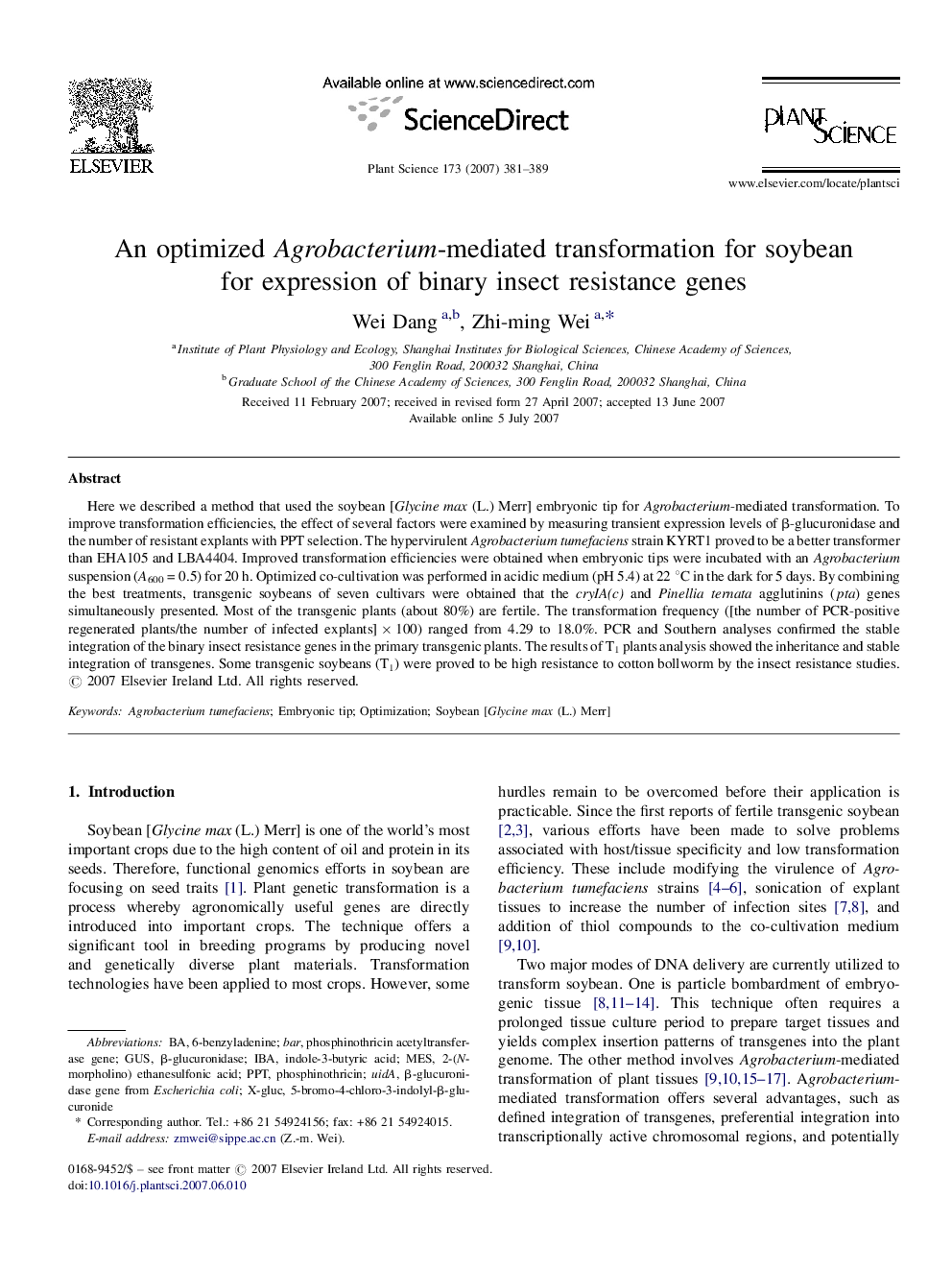| Article ID | Journal | Published Year | Pages | File Type |
|---|---|---|---|---|
| 2018674 | Plant Science | 2007 | 9 Pages |
Abstract
Here we described a method that used the soybean [Glycine max (L.) Merr] embryonic tip for Agrobacterium-mediated transformation. To improve transformation efficiencies, the effect of several factors were examined by measuring transient expression levels of β-glucuronidase and the number of resistant explants with PPT selection. The hypervirulent Agrobacterium tumefaciens strain KYRT1 proved to be a better transformer than EHA105 and LBA4404. Improved transformation efficiencies were obtained when embryonic tips were incubated with an Agrobacterium suspension (A600 = 0.5) for 20 h. Optimized co-cultivation was performed in acidic medium (pH 5.4) at 22 °C in the dark for 5 days. By combining the best treatments, transgenic soybeans of seven cultivars were obtained that the cryIA(c) and Pinellia ternata agglutinins (pta) genes simultaneously presented. Most of the transgenic plants (about 80%) are fertile. The transformation frequency ([the number of PCR-positive regenerated plants/the number of infected explants] Ã 100) ranged from 4.29 to 18.0%. PCR and Southern analyses confirmed the stable integration of the binary insect resistance genes in the primary transgenic plants. The results of T1 plants analysis showed the inheritance and stable integration of transgenes. Some transgenic soybeans (T1) were proved to be high resistance to cotton bollworm by the insect resistance studies.
Keywords
Related Topics
Life Sciences
Agricultural and Biological Sciences
Plant Science
Authors
Wei Dang, Zhi-ming Wei,
